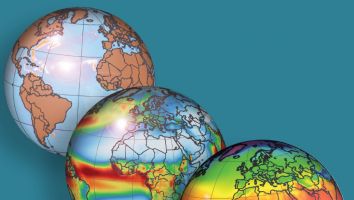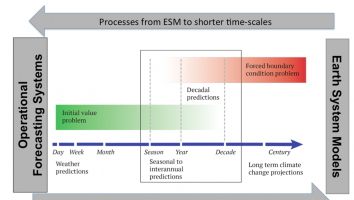Contributing to a better understanding of the basic processes determining climate variability and change, through the production of climate change scenarios at global and regional scales, the development of climate downscaling techniques and of specific products for Climate Services, the determination of the impacts of climate change and associated risks, with special emphasis on the Italian territory and on hot-spot regions.
Research goals:
- Climate simulations and projections
- Producing climate simulations with global Earth System models (EC-Earth) and regional climate models, including the reconstruction of climate variability in the last centuries, the generation of future scenarios till 2100 and the application of climate downscaling techniques, in the framework of international initiatives such as CMIP
- Contributing to the activities of Climate Services. In particular, some of the techniques developed at ISAC can be exported to the national and international system of Climate Services (reconstruction of pluviometric regimes in small mountain basins for hydropower generation, degree-day estimates for urban areas in order to quantify energy demand)
2.Climate change and the hydrological cycle
- Advancing knowledge on the changes in precipitation and in extreme precipitation events using high-resolution models.
- Developing climate downscaling and bias-correction techniques based on statistical and stochastic methods.
- Analysis of predictability in seasonal prediction experiments, sensitivity experiments and development of climate service tools for seasonal predictions.
- Developing new initialization techniques for seasonal to decadal climate predictions.
- Characterizing atmospheric moisture, heat and aerosol transport processes, including teleconnections.
- Characterizing and modelling climate change in mountain regions, through high-resolution global and regional models and snow-glacier models
3.Impact of climate change on ecosystems: Determine the ecosystem response to climatic and environmental changes, with specific emphasis on mountain regions, using both empirical and process-based models
4.Fundamental processes in climate dynamics and variability
- Characterizing the role of the biosphere in climatic processes
- Model sea-ice dynamics, with a special focus on the mechanical properties of the water-ice admixture and to salinity and heat transport
- Improving our understanding of climate internal and forced variability, climate predictability and associated uncertainties
- Characterizing the large-scale atmospheric processes and variability with a special focus on mid-latitude dynamics such as blocking, weather regimes, jet streams, storm tracks
- Assessing mechanisms for climate tipping points and their impacts
- Analysis of climate sensitivity in a hierarchy of climate models with different physical parameterizations
- Develop paleoclimate modelling (on recent and ancient time frames), and modelling of exoplanetary climates and habitability with EMICs

Proceed home page in cnr-isac domain:
http://proceed.isac.cnr.it/PROCEED
Reference:
A. Alessandri, F. Catalano, M. De Felice, B. Van Den Hurk, F. Doblas Reyes, S. Boussetta, G. Balsamo, and P. Miller, 2017: Multi-scale enhancement of climate prediction over land by increasing the model sensitivity to vegetation variability in EC-Earth, Clim. Dyn, 49(4), 1215-1237. doi:10.1007/s00382-016-3372-4


